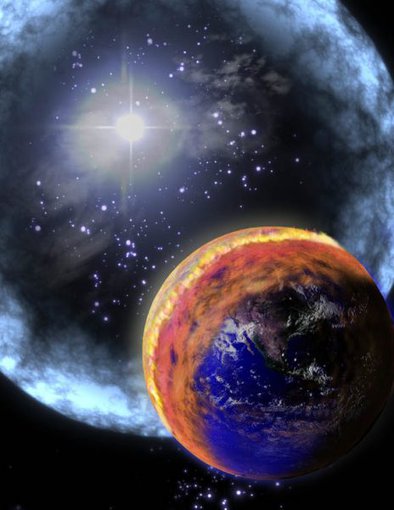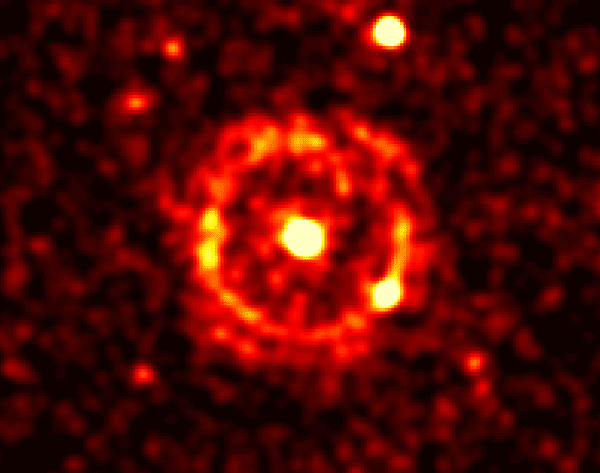
Dear Friends these are exciting times. You know as we watch together for the Coming of Our Lord, we are all learning new revelations from the Word of God. We are studying to show ourselves approved. Gaining wisdom and knowledge and building up our FAITH as we encourage each other with His promises.
Do not let yourselves be DECEIVED for we are in the Time of Great Deception. Hold fast to the truth and trust NO ONE BUT GOD! But, TRUST GOD with all your heart, soul, mind and spirit!. NO ONE ELSE CAN SAVE YOU. NO ONE CAN LOVE YOU LIKE OUR HEAVENLY FATHER.
WE are going to delve into the Rapture again. Do not get discouraged or weary in doing good. He is not late. HE is right on time. NO ONE is predicting a date. We are exploring the possibilities and preparing when we see times approaching. We do not want to be caught UNAWARE. Better we err by expecting HIM than err on the other side.
I know how easy it is to question, I have been EXUBERANTLY EXPECTING HIM for over 20 years. and shouting the alarm for much longer. He called me to warn others and call them to repentance over 50 years ago. He filled me with an URGENCY twenty years ago. I never thought we would get this far. When I met Gabriel 10 years ago and he shared with me what God had shown him about 2028… I believed him. I just was not convinced in my heart that it could take 10 more years. But here we are. I believe that 2028 is the year of Christ’s Return. That being the case, we should be entering the 7 Year Tribulation right about now. I believe that those who love the Lord and are walking with Him will be raptured first. I KNOW God’s children are not appointed to WRATH, so worst case scenario, there are only about 3 1/2 years left for God’s children.
I ADVISE EVERYONE TO WATCH, TO PRAY, AND TO SERVE HIM the best you can. Pray that God sends workers into the HARVEST FIELD… BECAUSE GOD’s HARVEST IS READY! IT IS HARVEST TIME.
spacer
Book of Jasher
Chapter 4
16 And all the sons of men departed from the ways of the Lord in those days as they multiplied upon the face of the earth with sons and daughters, and they taught one another their evil practices and they continued sinning against the Lord. And every man made unto himself a god, and they robbed and plundered every man his neighbor as well as his relative, and they corrupted the earth, and the earth was filled with violence. And their judges and rulers went to the daughters of men and took their wives by force from their husbands according to their choice, and the sons of men in those days took from the cattle of the earth, the beasts of the field and the fowls of the air, and taught the mixture of animals of one species with the other, in order therewith to provoke the Lord; and God saw the whole earth and it was corrupt, for all flesh had corrupted its ways upon earth, all men and all animals. And the Lord said, I will blot out man that I created from the face of the earth, yea from man to the birds of the air, together with cattle and beasts that are in the field for I repent that I made them.
20 And all men who walked in the ways of the Lord, died in those days, before the Lord brought the evil upon man which he had declared, for this was from the Lord, that they should not see the evil which the Lord spoke of concerning the sons of men.
spacer
Chapter 5
1 And it was in the eighty-fourth year of the life of Noah, that Enoch the son of Seth died, he was nine hundred and five years old at his death. And in the one hundred and seventy ninth year of the life of Noah, Cainan the son of Enosh died, and all the days of Cainan were nine hundred and ten years, and he died. And in the two hundred and thirty fourth year of the life of Noah, Mahlallel the son of Cainan died, and the days of Mahlallel were eight hundred and ninety-five years, and he died. And Jared the son of Mahlallel died in those days, in the three hundred and thirty-sixth year of the life of Noah; and all the days of Jared were nine hundred and sixty-two years, and he died.
5 And all who followed the Lord died in those days, before they saw the evil which God declared to do upon earth.
6 And after the lapse of many years, in the four hundred and eightieth year of the life of Noah, when all those men, who followed the Lord had died away from amongst the sons of men, and only Methuselah was then left, God said unto Noah and Methuselah, saying, Speak ye, and proclaim to the sons of men, saying, Thus saith the Lord, return from your evil ways and forsake your works, and the Lord will repent of the evil that he declared to do to you, so that it shall not come to pass. For thus saith the Lord, Behold I give you a period of one hundred and twenty years; if you will turn to me and forsake your evil ways, then will I also turn away from the evil which I told you, and it shall not exist, saith the Lord. And Noah and Methuselah spoke all the words of the Lord to the sons of men, day after day, constantly speaking to them. But the sons of men would not hearken to them, nor incline their ears to their words, and they were stiffnecked. And the Lord granted them a period of one hundred and twenty years, saying, If they will return, then will God repent of the evil, so as not to destroy the earth. Noah the son of Lamech refrained from taking a wife in those days, to beget children, for he said, Surely now God will destroy the earth, wherefore then shall I beget children? And Noah was a just man, he was perfect in his generation, and the Lord chose him to raise up seed from his seed upon the face of the earth. And the Lord said unto Noah, Take unto thee a wife, and beget children, for I have seen thee righteous before me in this generation. And thou shalt raise up seed, and thy children with thee, in the midst of the earth; and Noah went and took a wife, and he chose Naamah the daughter of Enoch, and she was five hundred and eighty years old. And Noah was four hundred and ninety-eight years old, when he took Naamah for a wife. And Naamah conceived and bare a son, and he called his name Japheth, saying, God has enlarged me in the earth; and she conceived again and bare a son, and he called his name Shem, saying, God has made me a remnant, to raise up seed in the midst of the earth. And Noah was five hundred and two years old when Naamah bare Shem, and the boys grew up and went in the ways of the Lord, in all that Methuselah and Noah their father taught them. And Lamech the father of Noah, died in those days; yet verily he did not go with all his heart in the ways of his father, and he died in the hundred and ninety-fifth year of the life of Noah. And all the days of Lamech were seven hundred and seventy years, and he died.
21 And all the sons of men who knew the Lord, died in that year before the Lord brought evil upon them; for the Lord willed them to die, so as not to behold the evil that God would bring upon their brothers and relatives, as he had so declared to do.
spacer
Of course you know the story of Noah and his family saved in the Ark
spacer
You know also, how the Hebrews were saved from the Death Angel when they put the blood on their Doorposts
spacer
You know that the children of Israel were saved from their sins by the symbolic sacrifice of the Lamb.
spacer
I hope that you know how GOD became flesh and paid the price for ALL by dying on the Cross to redeem us to Himself Once and for ALL, defeating SIN and DEATH.
50 Jesus, when he had cried again with a loud voice, yielded up the ghost. And, behold, the veil of the temple was rent in twain from the top to the bottom; and the earth did quake, and the rocks rent; And the graves were opened; and many bodies of the saints which slept arose, And came out of the graves after his resurrection, and went into the holy city, and appeared unto many. Matthew 27:50-53
Ephesians 4, Verses 7-10
7But each one of us was given grace according to the measure of the gift of Christ. Therefore God says, ‘When he ascended on high, he led captivity captive, and gave gifts to men.’ But this, ‘He ascended’ —didn’t he also first descend into the lower parts of the earth? He who descended is the one who also ascended far above all the heavens, that he might fill all things” (Ephesians 4:7-10 quoting Psalm 68:18).
17 The chariots of God are twenty thousand, even thousands of angels: the Lord is among them, as in Sinai, in the holy place. Thou hast ascended on high, thou hast led captivity captive: thou hast received gifts for men; yea, for the rebellious also, that the Lord God might dwell among them. Blessed be the Lord, who daily loadeth us with benefits, even the God of our salvation. Selah. He that is our God is the God of salvation; and unto God the Lord belong the issues from death. (Psalm 68:17-20)
This was a resurrection of people. Those who served God and died before Christ came to earth were waiting in a holding area known as Sheol. He brought them out and took them up with HIM.
I believe with all my heart, soul and mind, that there is a rapture that comes before the Tribulation. At least before the Great Tribulation I believe that He will spare those who love Him from having to see the suffering of the masses and especially of their loved ones who have rejected Christ/Yeshua.
I do not believe that God wants us to see them suffer. That was part of the punishment he put on the Fallen Angels. Because they had corrupted all flesh, they were forced to watch their offspring die. God does not punish those who love HIM.
Jesus Christ/Yeshuah HaMaschiah himself told us to pray that we be found worthy to ESCAPE ALL THAT IS COMING. Why would He tell us to pray that, if it was not possible?
Watch therefore, and pray always that you may be counted worthy to escape all these things that will come to pass, and to stand before the Son of Man.” Luke 21:36
spacer




Comments are closed.